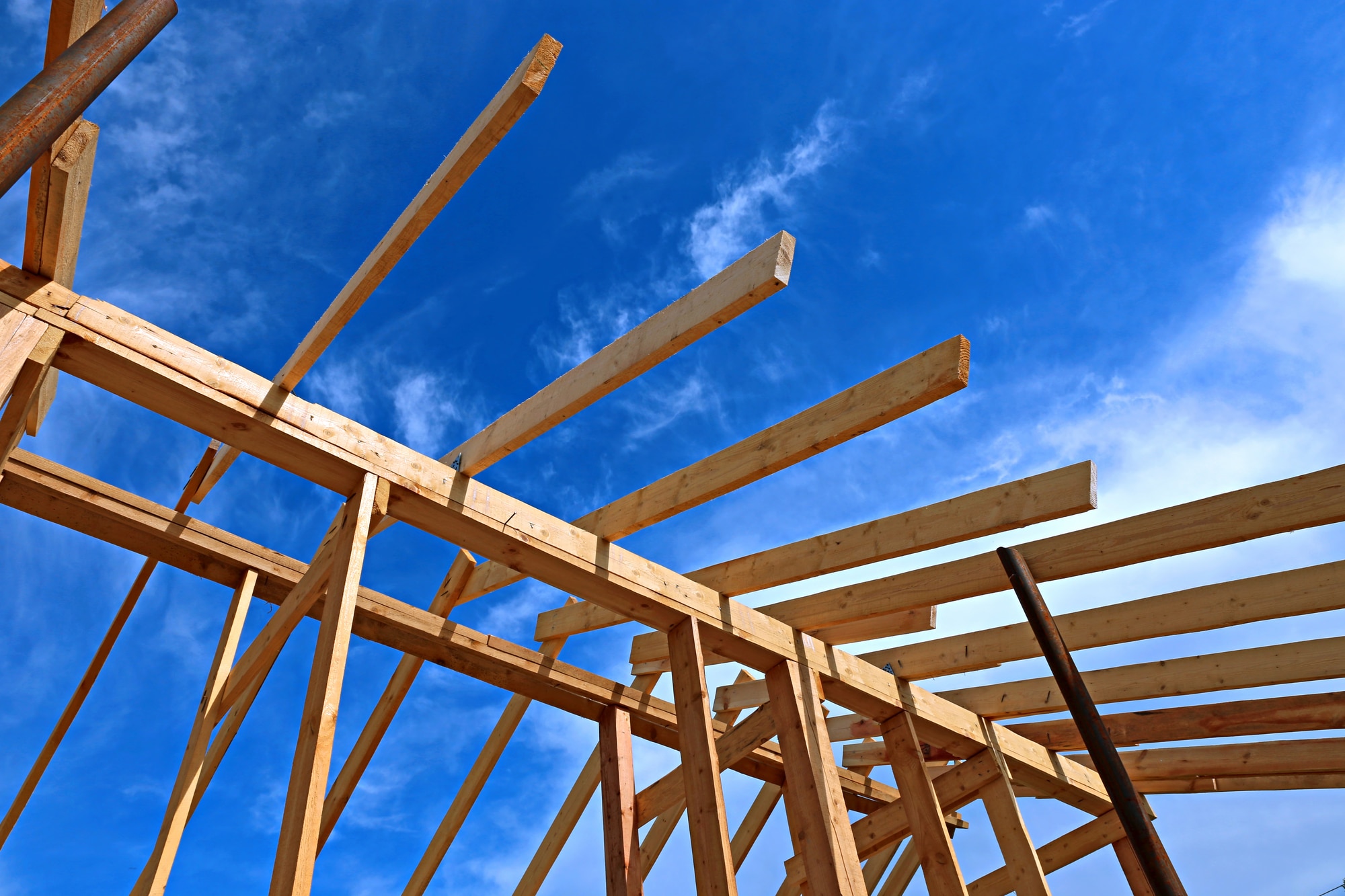Truss roofing is a type of roofing system that consists of rafters, or trusses, that support the roof deck and create the characteristic A-shaped design. Truss roofs are an excellent choice for many types of buildings due to their strength, span capability, and cost-effectiveness.
The benefits of the truss roofing system:
- Truss roofs are extremely strong and can span large distances without the need for internal support columns.
- This makes them ideal for use in commercial and industrial buildings where clear-span space is required.
- In addition, truss roofs are relatively easy to construct, which helps to keep costs down.
- Trusses can also be pre-fabricated off-site, which further reduces construction time and cost.
How is a truss roofing system installed:
A truss roof is a structural framework consisting of rafters, posts, and struts. The framework is designed to support the weight of the roof and transfer the load to the walls or foundation. Trusses are typically made from wood, but they can also be made from metal or concrete.
The most common type of truss roof is the gable truss, which has two sloped sides that meet at a peak. Other types of truss roofs include hip trusses, valleys trusses, and flat trusses. Installing a truss roof is a complex process that requires the expertise of a qualified contractor.
- First, the contractor will need to determine the size and type of truss that is required for the building.
- Next, the contractor will assemble the trusses on the ground and then lift them into place.
- Once the trusses are in place, the contractor will secure them to the walls or foundation with brackets or other fasteners.
- Finally, the contractor will install sheathing and shingles to complete the roof.
What are the different types of trusses available:
There are a variety of trusses available on the market today, each designed to meet specific needs.
- The most common type of truss is the Pratt truss, which is commonly used in bridges and buildings. This truss consists of diagonal members that are in compression, and horizontal members that are in tension.
- Another popular type of truss is the Warren truss, which uses a series of triangles to provide support. This truss is often used in roof construction as it provides good resistance to wind and snow loads.
- In addition, there are also a number of specialized trusses available, such as the Howe truss, which is designed for use in suspension bridges.
With so many different types of trusses available, it is important to choose the right one for the job at hand.
How much does a truss roofing system cost?
- The average cost of a truss roofing system is $5 to $12 per square foot. The advantage of this type of roof is that it can be customized to meet the specific needs of your home.
- You can also add features such as skylights and chimneys without worrying about the extra weight putting strain on the frame.
- In addition, trusses can be built from a variety of materials, including wood, metal, and glass, giving you plenty of options to choose from.
- As a result, a truss roofing system can provide you with a durable, attractive, and cost-effective option for your home.
Factors to consider before you install:
Truss roofing systems are a popular choice for many homeowners due to their relatively simple installation process and affordability. However, there are a few things to keep in mind before installing a truss roofing system.
- First, the trusses must be properly spaced in order to provide adequate support for the roof.
- Second, the trusses must be securely fastened to the walls of the home in order to prevent them from shifting or collapsing.
- Third, the eaves of the roof should be properly ventilated in order to allow air to circulate and prevent moisture build-up.
Endnote:
By taking these factors into consideration, homeowners can ensure that their new truss roofing system will be sturdy and long-lasting.
